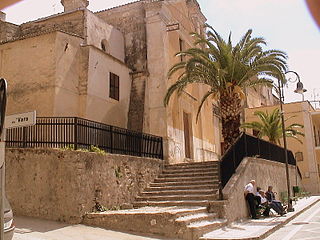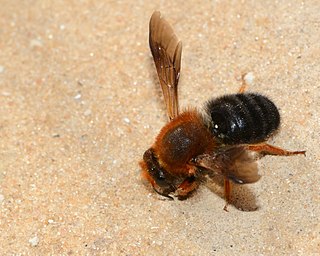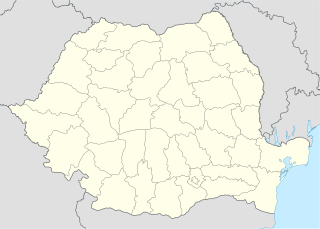
Zelkova is a genus of six species of deciduous trees in the elm family Ulmaceae, native to southern Europe, and southwest and eastern Asia. They vary in size from shrubs to large trees up to 35 m (115 ft) tall. The bark is smooth, dark brown. Unlike the elms, the branchlets are never corky or winged. The leaves are alternate, with serrated margins, and a symmetrical base to the leaf blade. The leaves are in two distinct rows; they have pinnate venation and each vein extends to the leaf margin, where it terminates in a tooth. There are two stipules at each node, though these are caducous, leaving a pair of scars at the leaf base. Zelkova is polygamous. Staminate flowers are clustered in the lower leaf axils of young branchlets; the perianth is campanulate, with four to six lobes, and the stamens are short. Pistillate and hermaphrodite flowers are solitary, or rarely in clusters of two to four, in the upper leaf axils of young branchlets. The fruit is a dry, nut-like drupe with a dorsal keel, produced singly in the leaf axils. The perianth and stigma are persistent.
Arba Sicula is a not-for-profit international society whose main objective is the preservation and promotion of the Sicilian language and culture. Its administration is located in Mineola, New York. The majority of members are also from the United States, although there are also members from Sicily, Canada and other countries where Sicilian immigrants are found in large numbers. The society was founded in 1978.

The genus Megachile is a cosmopolitan group of solitary bees, often called leafcutter bees or leafcutting bees. While other genera within the family Megachilidae may chew leaves or petals into fragments to build their nests, certain species within Megachile neatly cut pieces of leaves or petals, hence their common name. This is one of the largest genera of bees, with almost 1500 species in over 50 subgenera. North America has many native Megachile species. The introduced alfalfa leafcutter bee is managed for crop pollination.

Castellana Sicula is a comune (municipality) in the Metropolitan City of Palermo in the Italian region Sicily, located about 70 kilometres (43 mi) southeast of Palermo.

Lucca Sicula is a comune (municipality) in the Province of Agrigento in the Italian region Sicily, located about 60 kilometres (37 mi) south of Palermo and about 40 kilometres (25 mi) northwest of Agrigento.

Villafranca Sicula is a comune (municipality) in the Province of Agrigento in the Italian region Sicily, located about 60 kilometres (37 mi) south of Palermo and about 40 kilometres (25 mi) northwest of Agrigento. As of 31 December 2004, it had a population of 1,496 and an area of 17.7 square kilometres (6.8 sq mi).

Paolo Bianco is an Italian football coach and former footballer who played as a defender.

Chtenopteryx sicula, also known as the comb-finned squid or toothed-fin squid, is a species of squid native to at least the Mediterranean Sea. It is characterised by several distinct morphological features: ocular photophores are present but visceral photophores are absent, arm suckers are arranged in at least 4 series distally, and club suckers are borne in more than 8 series.

The Italian wall lizard, ruin lizard, or İstanbul lizard is a species of lizard in the family Lacertidae. P. siculus is native to Bosnia and Herzegovina, Croatia, France, Italy, Serbia and Montenegro, Slovenia and Switzerland, but has also been introduced to Spain, Turkey, and the United States. P. siculus is the most abundant lizard species in southern Italy.

The Sicilian shrew is a species of mammal in the family Soricidae. It is found in Sicily (Italy) and Gozo (Malta). Its natural habitat is temperate shrubland.

Chalicodoma is a subgenus of the bee genus Megachile in the family Megachilidae.

Șicula is a commune in Arad County, Romania, is situated on the southern part of the Teuz Plateau, along the Crişul Alb River. Its surface stretches over 13,130 ha. It is composed of three villages: Chereluș (Kerülős), Gurba (Garba) and Șicula.

Home and Away was a syndicated comic strip written and drawn by Steve Sicula. It was syndicated nationally by the Washington Post Writers Group from 2003 to 2015.
Vincenzo Torrente is an Italian football coach and former defender. He currently manages Sicula Leonzio in Serie C.
Paul E. Sicula was an American lawyer and politician.

Sicula Leonzio, also commonly known as Leonzio, is an Italian football club located in Lentini.
The 2017–18 season is U.S. Lecce's sixth consecutive season in Lega Pro after their relegation from Serie A at the end of the 2011–12 season. The club competed in Serie C Gruppo C, gaining promotion to Serie B, in the Coppa Italia and in the Coppa Italia Serie C.
FS Class 410 were 0-8-0 steam locomotives which the Italian State Railways (FS) acquired from Rete Sicula on nationalization in 1906.

FS Class 910 were 2-6-2 tank locomotives designed by Guglielmo Cappa for Rete Sicula where they were registered as RS Class 400. They were absorbed by Italian State Railways (FS) in 1905 and became FS Class 910.
















